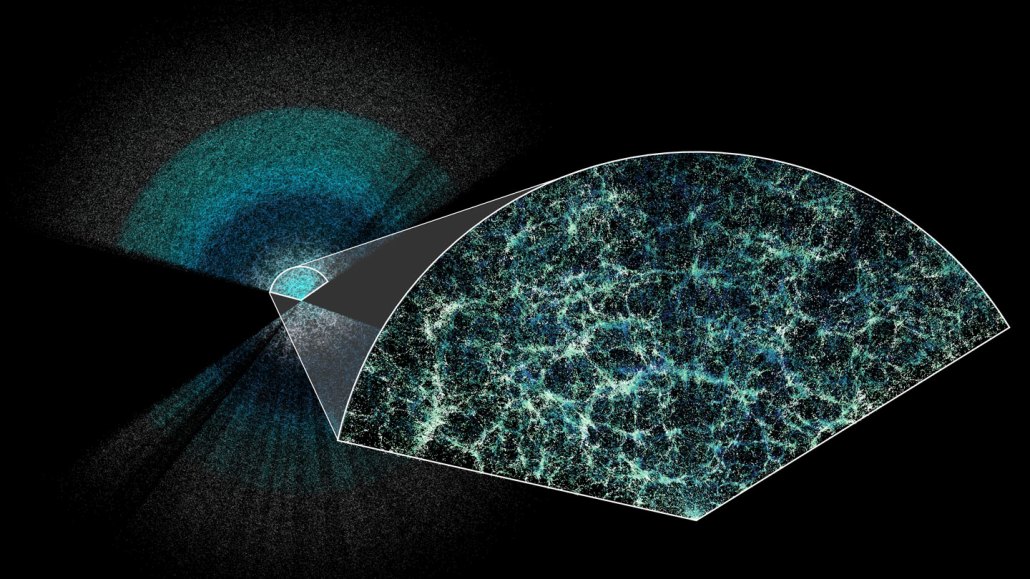
The largest 3-D map of the universe (a thin slice shown, inset), made with data from the Dark Energy Spectroscopic Instrument, contains clues that suggest dark energy’s behavior changes over time.
Claire Lamman/DESI collaboration; custom colormap package by cmastro